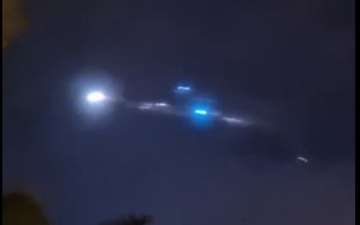A Chinese rocket crashed into the Indian ocean late Saturday night, and many users managed to capture the vision on their cameras. The rocket resembled a meteor shower and took social media on a storm. According to the China Manned Space Agency (CMSA), China launched the 23-ton Long March-5B Y3 carrier rocket on July 24.
Videos showed the debris in the sky in blue, red and yellow lights. The lights were burning debris that reentered the earth's atmosphere over the Indian Ocean.
US Space Command shared information on the incident and said, "USSPACECOM can confirm the People's Republic of China (PRC) Long March 5B (CZ-5B) re-entered over the Indian Ocean at approx 10:45 am MDT on 7/30. We refer you to the PRC for further details on the reentry's technical aspects such as potential debris dispersal+ impact location."
NASA astronaut Chris Hadfield explained, and said, "Looks like that Chinese rocket just burned up over Malaysia. Now wait to hear what big pieces splashed/thumped to Earth."
China has faced criticism for allowing rocket stages to fall to Earth uncontrolled twice before.
NASA accused Beijing last year of “failing to meet responsible standards regarding their space debris” after parts of a Chinese rocket landed in the Indian Ocean.
The country's first space station, Tiangong-1, crashed into the Pacific Ocean in 2016 after Beijing confirmed it lost control. An 18-tonne rocket fell uncontrolled in May 2020.
China also faced criticism after using a missile to destroy one of its defunct weather satellites in 2007, creating a field of debris that other governments said might jeopardise other satellites.
The July 24 launch of the Long March-5B, China's most powerful rocket, carried the Wentian laboratory into orbit. It was attached on Monday to the Tianhe main module, where three astronauts live.
The remains of a separate cargo spacecraft that serviced the station fell into a predetermined area of the South Pacific after most of it burned up on reentry, the government announced earlier.
(with agencies inputs)
Also Read | NASA aiming for late August test flight of giant moon rocket
Latest World News

